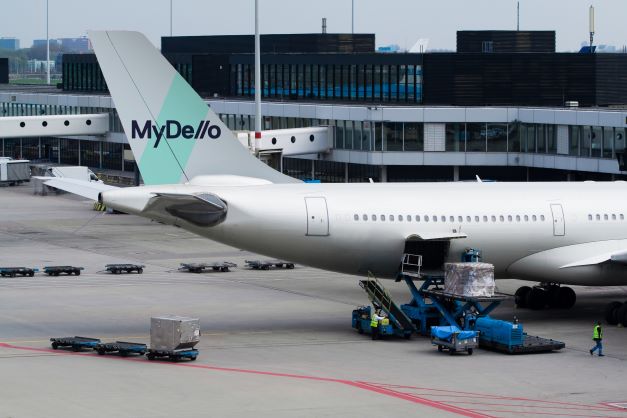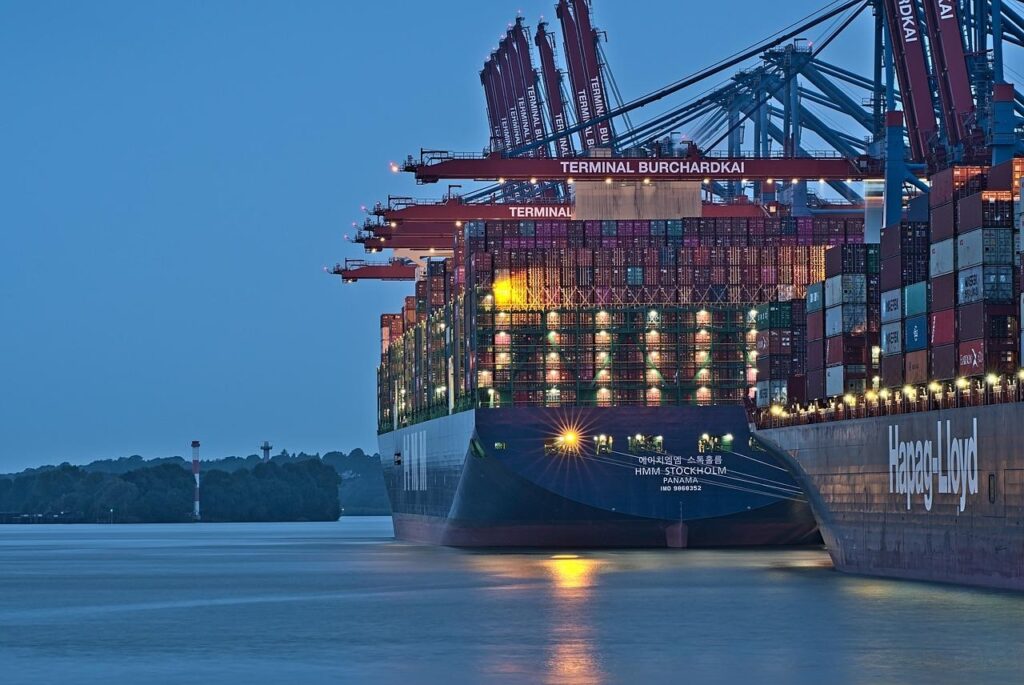
International transport and transactions involve a lot of different documents. One of the most important pieces of documentation is the waybill, which depending on the mode of transportation can also be called CMR, bill of lading or air waybill. In essence, a waybill is an important document that provides essential information about a shipment and often acts as a legal contract between the sender and carrier.
Contents
In this article, we will give an overview of the most common types of waybills and their main differences.
MyDello takes the stress out of global shipping. Understanding your shipment size can be difficult at the best of times, MyDello has built an online calculator to simplify this whole process.
Create Your No-Cost Account Today and experience the New Era of Logistics
A waybill or a bill of lading is required when shipping goods internationally, whether by air, sea, rail or road. The document’s primary purpose is to provide information about the shipment, but in some cases can also act as a receipt for payment and be required for insurance purposes. As a rule of thumb – whenever you plan to ship something, you will need a waybill.
Things can get a bit complicated when it comes to the documents needed for different modes of transportation – air freight and ocean freight have different documents attached to shipments. Sometimes there can be different options in documentation even across a single mode of transportation.
In general:
A bill of lading is required when transporting goods by ship. Sometimes also called ‘ocean bill of lading’, this document should not be confused with a regular waybill. The difference being that a bill of lading is authoritative in nature which means it acts as the title to the goods in question – whoever has the bill of lading, possesses the goods.
Nevertheless, a waybill and bill of lading generally contain the same types of information:
While a bill of lading is not always necessary (such as when shipping with or between trusted parties), the document is legally binding and guarantees smooth shipping.
It is also required whenever there’s a third party involved with the shipment process. Creating a bill of lading is relatively simple, as there are many templates available online and all you have to do is fill it with the right information. The bill of lading is filled in by the seller, but must be signed by an authorized agent to become legally binding. To make things more complicated, there are actually different kinds of bills of lading as well. You can read more about them here.

An air waybill (AWB) is, as the name suggests, an air consignment note that goes with goods shipped by air transport, providing information about the shipment and allowing it to be tracked.
Just like the bill of lading, an AWB is a legal contract of carriage between the shipper and the carrier in international trade and a receipt of goods by an airline. It also sets the terms and conditions of the shipment. As with any waybill, multiple copies will be made for all the involved parties.
The airway bill contains:
It must also declare shipment value for customs, weight and other information about the shipment as well as any special instructions. The legal document also contains the conditions of the carrier’s terms and conditions, such as liability limits and claims procedures.
Create Your No-Cost Account Today and experience the New Era of Logistics
The main difference between an AWB and a bill of lading is that the former is non-negotiable, meaning it doesn’t specify when the shipment will be sent or arrive. While bills of lading are legal documents between the shipper and carrier and also detail the type, quantity and destination of the goods, they also act as a receipt of shipment when the goods are delivered. An AWB being non-negotiable however does not cover the merchandise value – it is simply a contract for transportation.
Also known as a CMR consignment note. This document is required for international shipping by road transport in order. The CMR is very similar to regular waybills with one main difference – it also acts as an insurance document. Should the goods become damaged or lost during transport, the CMR gives the owner of the goods a right to insurance claims against the carrier.
In general, the document acts as proof of the contract of carriage by road, determines the scope and responsibility for the operation and describes the parties involved. You can check here for more information about the insurance of international shipments.
CMR is governed and gets its name from the ‘Contrat de Transport International de Marchandises par Route’ (French for International Agreement on Contract for the International Transport of Goods by road) which has governed international road transport for more than five decades. The CMR document is usually given to the carrier (driver) by the sender as it can also contain instructions for the carrier.

Rail transport documents or rail consignment notes are most commonly referred to as CIM consignment notes or simply CIM documents. CIM documents are used in rail transport to confirm that the rail carrier has received the goods and to prove that a contract of carriage exists between trader and carrier.
It helps to know that international rail transport obeys the international and uniform system of laws of OTIF (Intergovernmental Organisation for International Carriage by Rail). The system of laws themselves are known as the COTIF (Convention concerning International Carriage by Rail) and the appendix B of that Convention is called CIM (Uniform Rules Concerning the Contract of International Carriage of Goods by Rail). Therefore, any transport documents created according to the CIM Convention are known as CIM consignment notes or CIM documents.
It is important to note that a CIM consignment note is a non-negotiable transport document, which means it’s not a document title of goods and that all rail carriers can deliver goods to the consignee without the original copy of the transport document. This also means that exporters and banks should be careful when working with a letter of credit that demands a rail transport document as a transport document, because neither exporters nor banks could secure goods as collateral.
Take advantage of Mydello’s years of logistics industry knowledge by contacting us and talking to our team of experts.
Create Your No-Cost Account Today and experience the New Era of Logistics
Waybills, bills of lading or other similar documents (depending on the transportation method) are essential documents whether shipping goods by air, sea or land. Different types of transportation require different kinds of waybills, but in essence, they all provide proof of contract between the sender and carrier and information about the shipment.
Although there are many online templates and guides for creating waybills, it can be a daunting task for anyone new to the international logistics sector. MyDello deals with international shipping and trade documents every single day and knows every little detail there is to know about these procedures. Do not hesitate to contact us whether you need advice with waybill documents or want to trust your shipments to an experienced third party.

